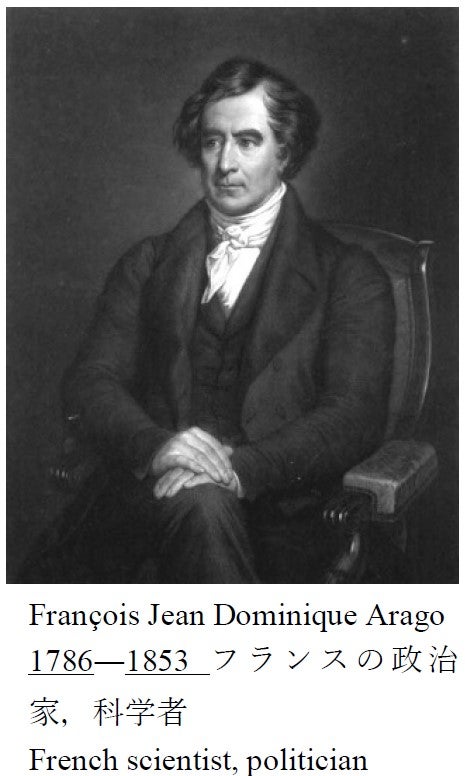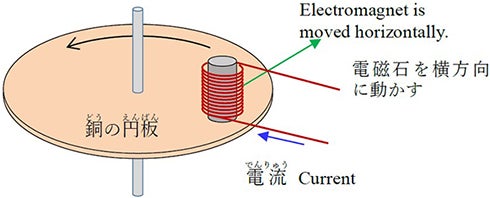Glossary of Motor Terms
Arago's disk
Arago noticed in 1822, when he was conducting geomagnetic measurements on a hill at Greenwich, that certain metallic substances had a damping effect on the magnetic needle. This led him in 1825 to carry out an experiment showing that a magnetic needle could be affected by the rotation of a non-magnetic metallic substance, which is now known as "Arago's disk." (In 1831, Faraday explained this effect in terms of induction.) The figure below shows an alternative version of his original experiment.
When an electromagnet is moved from the left to right above a copper disk (so that it does not touch the disk), the disk will rotate in the direction indicated by the black arrow regardless of the polarity of the electromagnet. The same effect can be achieved with a permanent magnet as well.


